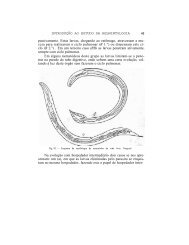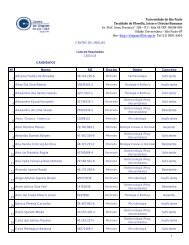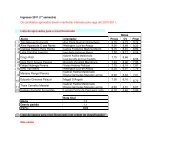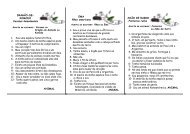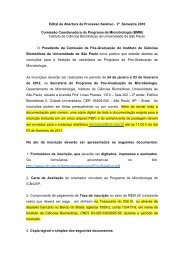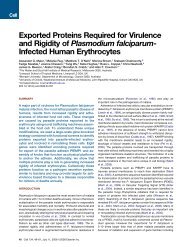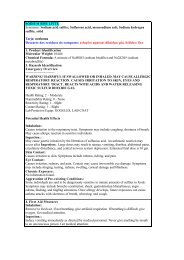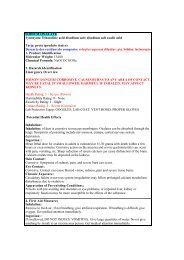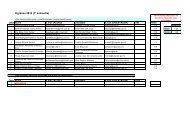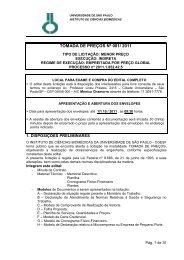SODIUM NITRATE Synonyms: Nitratine; nitric acid, sodium ... - USP
SODIUM NITRATE Synonyms: Nitratine; nitric acid, sodium ... - USP
SODIUM NITRATE Synonyms: Nitratine; nitric acid, sodium ... - USP
- No tags were found...
Create successful ePaper yourself
Turn your PDF publications into a flip-book with our unique Google optimized e-Paper software.
Remove any contaminated Clothing. Wipe off excess from skin. Wash skin with soap andwater for at least 15 minutes. Get medical attention if irritation develops or persists.Eye Contact:Immediately flush eyes with plenty of water for at least 15 minutes, lifting lower and uppereyelids occasionally. Get medical attention immediately.5. Fire Fighting MeasuresFire:Not combustible, but substance is a strong oxidizer and its heat of reaction with reducingagents or combustibles may cause ignition.Explosion:Explosive with shock, heat or friction. Sodium Nitrate decomposes explosively when heated >538C (1000F). Sensitive to mechanical impact.Fire Extinguishing Media:Use any means suitable for extinguishing surrounding fire. Water spray may be used to keepfire exposed containers cool.Special Information:Wear full protective Clothing and breathing equipment for high-intensity fire or potentialexplosion conditions. This oxidizing material can increase the flammability of adjacentcombustible materials.6. Accidental Release MeasuresRemove all sources of ignition. Ventilate area of leak or spill. Wear appropriate personalprotective equipment as specified in Section 8. Spills: Clean up spills in a manner that does notdisperse dust into the air. Use non-sparking tools and equipment. Reduce airborne dust andprevent scattering by moistening with water. Pick up spill for recovery or disposal and place ina closed container. Small amounts of residue may be flushed to sewer with plenty of water.7. Handling: and Sto rageKeep in a tightly closed container, stored in a cool, dry, ventilated area. Protect againstphysical damage and moisture. Isolate from any source of heat or ignition. Avoid Storage onwood floors. Separate from incompatibles, combustibles, organic or other readily oxidizablematerials. Containers of this material may be hazardous when empty since they retain productresidues (dust, solids); observe all warnings and precautions listed for the product.8. Exposure Controls/Personal ProtectionAirborne Exposure Limits:None established.Ventilation System:A system of local and/or general exhaust is recommended to keep employee exposures as lowas possible. Local exhaust ventilation is generally preferred because it can control theemissions of the contaminant at its source, preventing dispersion of it into the general workarea. Please refer to the ACGIH document, Industrial Ventilation, A Manual of RecommendedPractices, most recent edition, for details.Personal Respirators (NIOSH Approved):For conditions of use where exposure to dust or mist is apparent and engineering controls arenot feasible, a particulate respirator (NIOSH type N95 or better filters) may be worn. If oilparticles (e.g. lubricants, cutting fluids, glycerine, etc.) are present, use a NIOSH type R or Pfilter. For emergencies or instances where the exposure levels are not known, use a full-facepositive-pressure, air-supplied respirator. WARNING: Air-purifying Respirators do notprotect workers in oxygen-deficient atmospheres.



